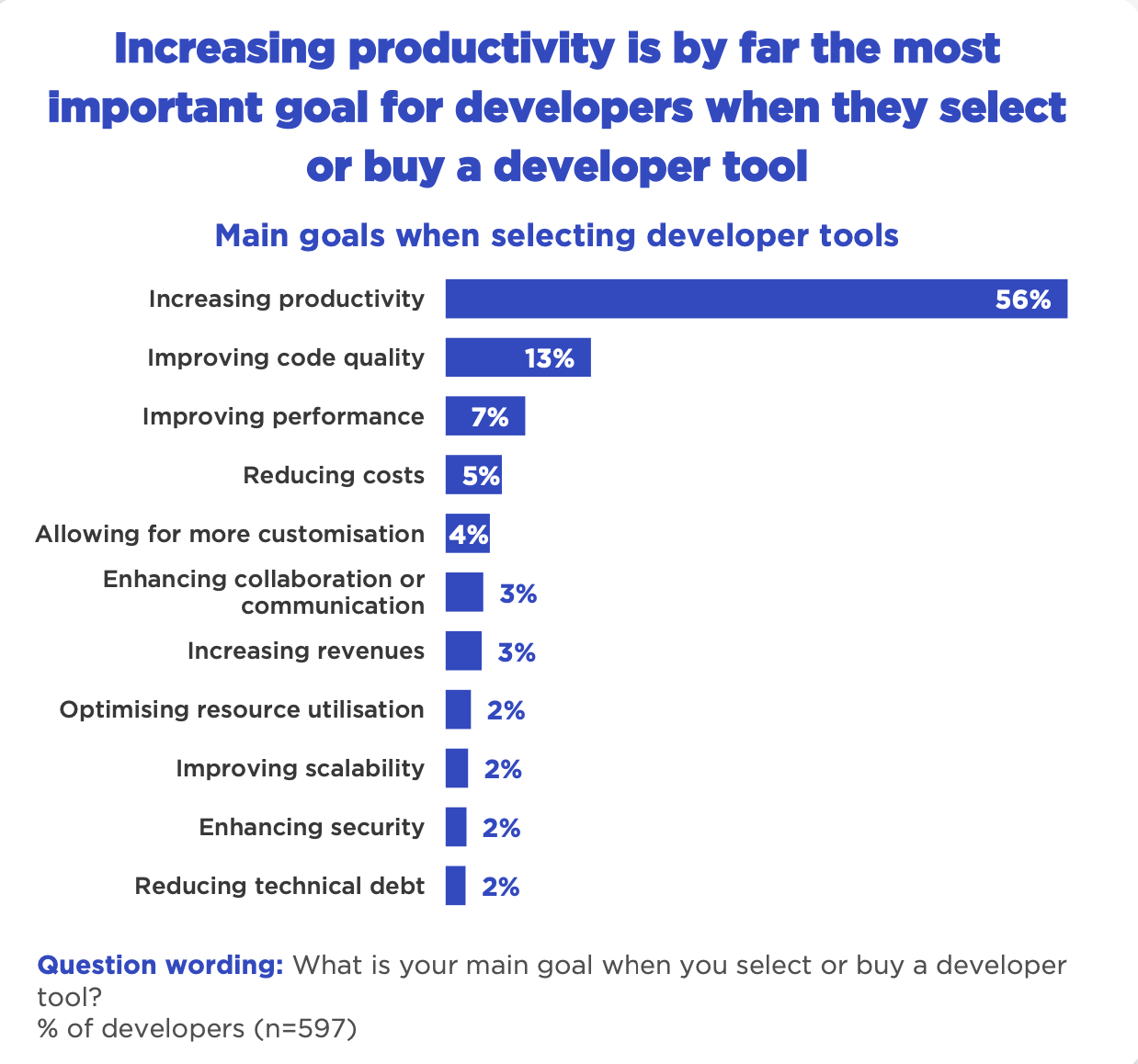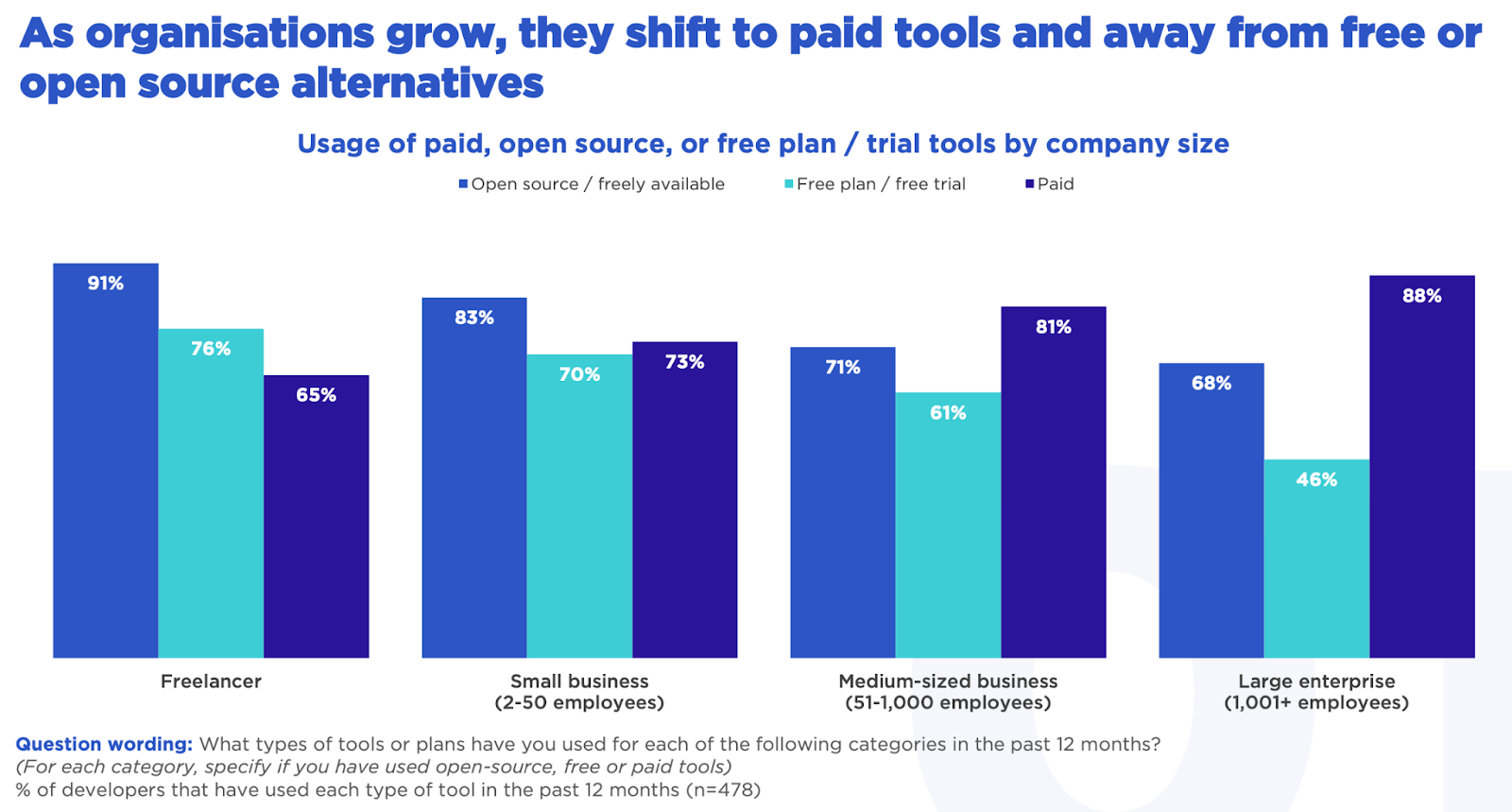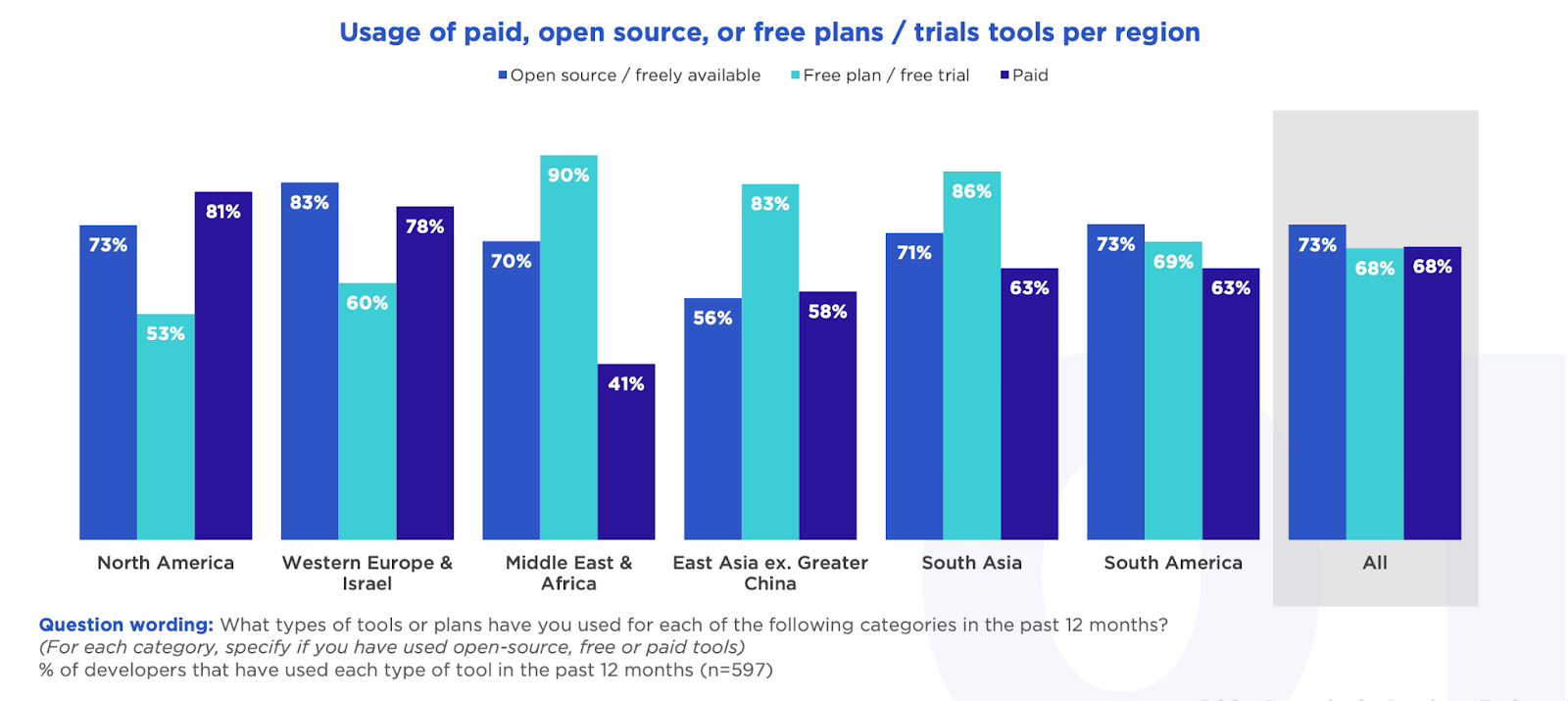What to Know About Pricing Developer Tools
 Andrew ParkEditorial Lead, Heavybit
Andrew ParkEditorial Lead, Heavybit
Pricing Strategies for Developer Tools: Start With What Motivates Your Customers
Pricing developer tools successfully requires prioritizing your audience’s needs, understanding what plans your customers expect, and considering potential differences across types of markets. Some of the most important considerations for pricing and packaging developer tools include:
- Developer Priorities: What motivates the developers who purchase your product
- Appropriate Pricing Plans: Including whether freemium/premium versions make sense
- Understanding Customer Differences: Including potential pricing sensitivities based on company size or location
In this article, we’ll cover best practices for pricing developer software tools based on learnings from SlashData’s Pricing Strategies for Developer Tools report.
“Even if a large company ultimately is your customer, you have to start somewhere, and starting with people is how you do it.” -Jeff Lawson, co-founder/Twilio, SaaS & the Art of Software Pricing
Productivity as a Key Motivator for Developer Tool Pricing
For founders of developer tools startups, product-market fit is often an extremely high priority, as it should be. However, for pricing, tech investor Parsa Saljoughian suggests that “it’s all about product-market-price fit.” Pricing can be tricky for developer tools. You’re selling to builders who not only have access to competing, free, and open-source solutions, but might theoretically build solutions themselves. Part of successfully pricing your software involves setting price levels that are superior to the burden and cost of rolling your own or maintaining free or open-source offerings. Another important aspect of pricing is focusing on what motivates your audience.
By far the biggest selling point for a developer tool is an increase in productivity, according to survey respondents–56% cited it as their main goal when selecting a developer tool, with the next most popular choice of “improving code quality” trailing at 13%. Increased productivity was also the top motivation of non-professional developers at 40%, followed by improving performance at 19%.
More than two-thirds (nearly 70%) of freelancers select tools to enhance their productivity, which tracks since their income is most directly tied to their efficiency.

Productivity ranks highly as a key motivator for devs to purchase new software.
Procurement decisions for businesses often come down to two factors: Reducing costs or increasing revenue—but these don’t really influence individual developers. Just 5% consider cost cutting (and only 3% think of revenue boosting) to be a priority when selecting or buying a tool. Developers may be unmoved by promises of gains in these areas, but being able to show measurable business value could become important later if your champion needs to make a case for budget approval (this is explored further in the report).
How to Price Your Products Appropriately for Different-Sized Organizations
According to the report, “As organizations grow, there is a noticeable shift towards paid tools and away from free or open source alternatives.” 88% of large enterprises pay for tools compared with 73% of small businesses and 65% of freelancers.

Larger orgs seem to pivot away from free developer tools for a variety of reasons.
Bigger budgets may contribute to this shift, as developers have access to more resources and therefore more developer tooling options.
New compliance or support requirements can also influence tooling choices. As companies scale, it’s common to hit the ceiling of free or freemium tooling and find that features like multi-factor authentication and SSO are not common at freemium or individual pricing tiers. Reliable support, SLAs, and security suddenly take priority as companies gain more (and more high-profile) customers with governance and compliance needs of their own.
Paid plans aren’t just for enterprises, though. The results show that businesses of all sizes use some combination of open source, free, and paid tooling. What they choose to spend budget on will be influenced by a few things, including how much of a productivity boost they can expect, and what the tool is for:
“For example, 71% of developers use free or open source options for container orchestration tools, e.g. Kubernetes, while only 34% use paid solutions.”
An established, open-source solution with an active community will likely be more appealing than a similar tool that costs money without a compelling differentiator.
How Region Can Affect Pricing Preferences
Across all regions, the distribution of open source, free, and paid solutions was fairly consistent, with open source representing the largest share at 73%, compared to the other categories (both 68%).
However, the location of developers seem to have a considerable impact on tool choices.

Devs' propensity to pay for software may also vary with region.
The use of paid tools is more prevalent in North America and Western Europe, with 81% and 78% of developers in those regions choosing paid options (although open source still has the edge in Europe, at 83%). In contrast, an average of 55% across all other regions opt for paid tooling. Developers in the Middle East and Africa are least likely to pay for tools, with 41% doing so.
“Converting free users into paying customers poses a greater challenge in the Middle East and Africa, Asia, and South America.”
Differences in exchange rates, budgets, and approaches can all affect conversions, so your approach to pricing and marketing may need to vary across different regions.
Check out SlashData’s full Pricing Strategies for Developer Tools report for more insights into what leads developers to start or stop using different developer tools, what causes them to upgrade, and how they feel about different pricing models–the firm also offers pricing strategies for its customers directly.
Content from the Library
How to Design a Better Billing System for Your Startup
How to Design a Billing System for Your Startup With the growing demand for product-led growth strategies, the hidden technical...
Retention Lessons from 20k SaaS Companies with ProfitWell’s CEO
In this Speaker Series, ProfitWell CEO Patrick Campbell shares data-driven insights on how reducing churn is one of the most...
Commercial Open Source Business Strategies
Gitlab CEO Sij Sijbrandij weighs the pros & cons of various commerical open source business strategies, including Gitlab’s choice...